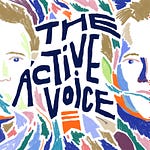I met
at Electric Lady Studios, the studio in New York’s Greenwich Village opened by Jimi Hendrix a few weeks before he died, and she immediately walked me down to the basement level to show me the original murals—psychedelic, space-themed—that Hendrix had commissioned for the walls. She had first seen them in 1970, at the studio’s opening, when, before she was a well-known artist and the “godmother of punk rock,” she bumped into Hendrix on the staircase. “He stopped and talked to me and told me that he was also shy,” she says. “We talked about his vision for the studio.” Five years later, she recorded the groundbreaking album Horses in Studio A. “It was beautiful but heartbreaking when we started recording to realize that he had such visions for the studio and never got to realize them.”Our initial plan was to do our interview in Studio A, but a miscommunication meant that it was already occupied by a film crew, so we instead went upstairs to a much smaller room, where Patti sat on a brown leather couch and I planted myself on an office chair opposite her. We sat there in conversation for two hours, and most of the time I was just thinking, “I’m sitting with Patti Smith, I’m sitting with Patti Smith,” breaking every so often in an attempt to produce a smart-enough question.
Confined to her home during the pandemic, Patti started publishing on Substack to serialize a story, “The Melting,” and then began sharing poetry, songs, audio notes, and videos where she read to her subscribers and shared memories. “It kept me engaged with the people in the world.” Once she was free to tour again, she shot video on her iPhone to take her subscribers backstage with her band. She also performed a concert from Studio A that was livestreamed for her subscribers. Her Substack is her only online presence other than Instagram, where, at her daughter’s urging, she opened an account and now has more than 1 million followers.
She’s 76 years old and still rocking hard, as demonstrated by her energetic birthday performance at Brooklyn Steel. In this conversation, I ask her about how being an artist in 2023 compares to 1973, and how she views this current moment in culture. We talked about building things up versus tearing things down, about friends loved and lost, and about living with gratitude. The opening line from Hendrix’s epic song “1983… (A Merman I Should Turn to Be)” has become something like a mantra for Patti: “Hooray, I wake from yesterday.”
Hooray indeed.
Quotes from the conversation
On learning gratitude
My mother always taught us the value of relativity. When I was a kid, my shoes were in ill repair, and my family didn’t have any money to get me a new pair of shoes. I was maybe sad about that. My mother said [the proverb], “I wept because I had no shoes, and then I saw a man who had no feet.”
On meeting Jimi Hendrix
He stopped and talked to me and told me that he was also shy. We talked about his vision for the studio. I never thought that I’d ever record. I’d had no thoughts of recording. I didn’t imagine that I’d have a rock and roll band. I was writing poetry, and then I wound up recording my first album.
On writing
Even though it might sound conceited, sometimes I write stuff that I just like reading. I’ll write to entertain myself if it ... ’cause I only publish maybe a tenth of what I write.
On Robert Mapplethorpe
I remember once we had no money and we were walking somewhere at night, and someone had left a pair of alligator shoes—I don’t know if they stole them or what—brand-new, really expensive, beautiful, glowing alligator shoes on the sidewalk. Robert, we stood there and looked at them and we had this little game, and I’d say, “Life or art.” He said, “If they fit me, both.”
On guitarist Lenny Kaye
I had a spinal accident. I’d fractured several bones in my spine, and I couldn’t do anything. I got my first big poetry book. I got $10,000 to do a major poetry book, and I couldn’t write. I think I was going to get a $5,000 advance, which was a lot of money then. So Lenny would bring his typewriter and sit by my bed.
On losing loved ones
With my husband, it’s too much to talk about. It’s unfathomable how much losing him has impacted my life, and also having two children, young children, when he passed away; and my brother; missing Robert, because Robert and I would’ve done so many things. I look around at the landscape of all these people and the work we would’ve created independently and things we would’ve done on our own.
On multiple writing projects
My readers are condemned to have to go through my lengthy process. And sometimes the fact that that poem is now interrupted by another thing that came into my head, and then I’m writing another thing.
On trying Twitter
I said, “This is like writing haiku poetry.” I tried it once or twice and I said, I can’t do this. I just can’t do it. I don’t want to talk to people with 18 words. And also, I don’t want them talking to me. So I never did that.
On isolation
I went from going to see the world with my little suitcase to being totally confined. And also, as a writer, it’s very solitary, but when I’m on the road, that’s my public life. That’s when I’m engaging with the people. And all of a sudden I was confined, and really confined. I saw nobody but my daughter.
On being online
In terms of my own contribution, it’s not going to change the world, not going to break any barriers, but it does give people a place where they’re going to be entertained, aesthetically.
On performing
It gives me a chance to play with my son, who’s a great guitarist, and to see the people. But in terms of the level of performance, it’s just what I do. I’ve always been an energetic performer.
On creating work
When I was younger, we really wanted to break new ground and create space for new generations. I feel that I somewhat accomplished my goals, but I don’t have those same goals now. That’s for new generations to do.
On what’s worthwhile
That’s my main secret—not-so-secret—goal: to do at least one book and maybe one more record that would be of worth. I don’t have any desire to just throw a record together, because why? I’m not compelled to do that. But if I have it in me to give one more thing that I think is worthwhile, I’ll do it.
On historical context
I just think this whole idea of changing words and books because they make one uncomfortable or taking the rape scenes out of the Metamorphoses—this is, to me, it’s not just dangerous. You start there, and where do you finish?
On cancel culture
I’m always optimistic. I just refuse to be pessimistic. Pessimism breeds nothing. A pessimistic person does not create anything. A pessimistic person does not envision anything. It’s not that I feel pessimistic. I just feel that people are moving too quickly via social media, not examining everything in a cubistic way, not examining all the facets of things, not trying to understand how certain things fit in the context of the history that happened or when they happened.
On being famous
I’ve had a lot of exciting things happen in my life. They’re wonderful, but they don’t define me. What defines me is the work that I do or the work that I’m working on. This notebook defines me more than any of that, because this is my hopes and dreams and where my struggle is today.
On being alive
I’m grateful to be alive. I love being alive. I love working and seeing new things. I still have great enthusiasm for new work, new films people make, new books people write, whatever I can possibly do. So I guess it all comes down to gratitude.
Show notes
Subscribe to Patti Smith on Substack
You can also find Patti on Instagram
[03:37] Meeting Jimi Hendrix
[10:28] Learning to write
[12:18] Transcribing with Lenny Kaye
[14:40] Lost loved ones
[15:53] Friendship at its best
[25:09] Writing The Melting
[20:01] Trying Twitter, then Instagram
[36:31] Taking subscribers behind the scenes
[38:56] Being an artist in 1973
[41:46] Patti’s “not so secret” goal
[44:09] On Picasso and social media
[57:00] On being misrepresented in the media
[59:06] Still mourning John Lennon
[1:02:23] Contributing something of quality
The Active Voice is a podcast hosted by Hamish McKenzie, featuring weekly conversations with writers about how the internet is affecting the way they live and write. It is produced by Hanne Winarsky, with audio engineering by Seven Morris, content production by Hannah Ray, and production support from Bailey Richardson. All artwork is by Joro Chen, and music is by Phelps & Munro.




















Share this post